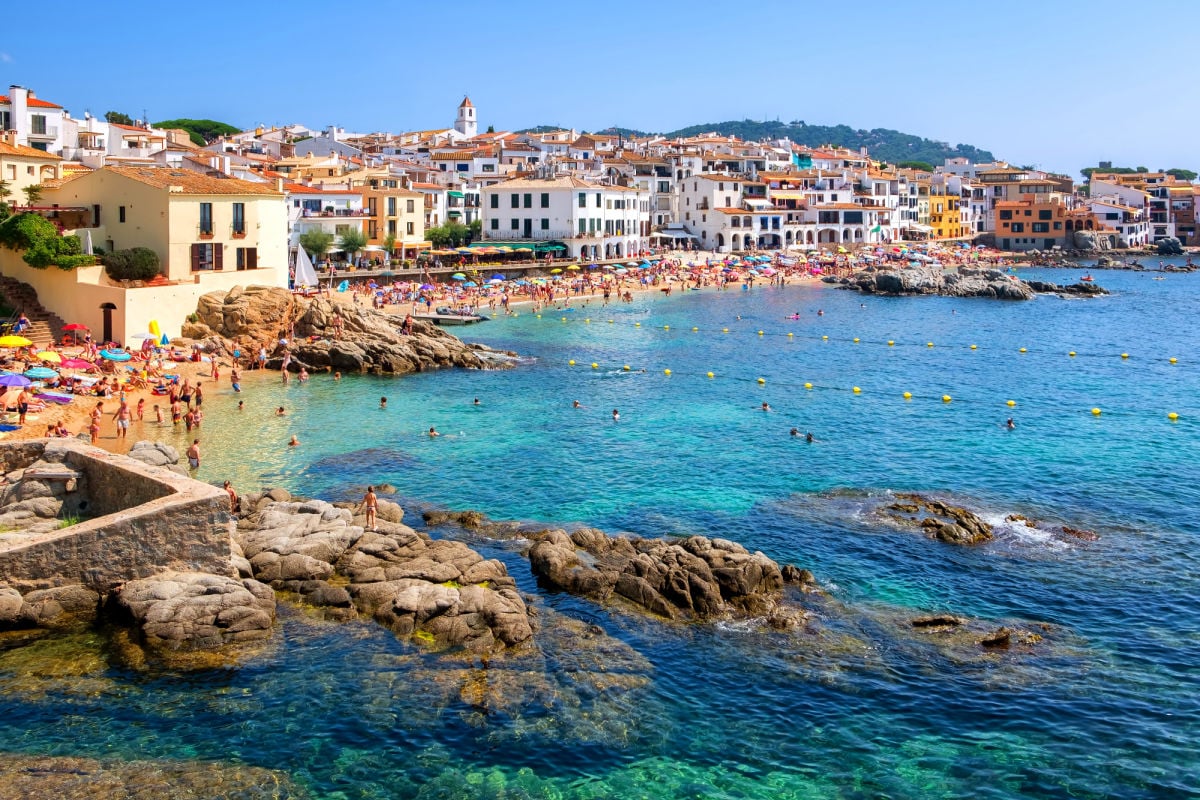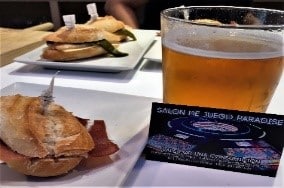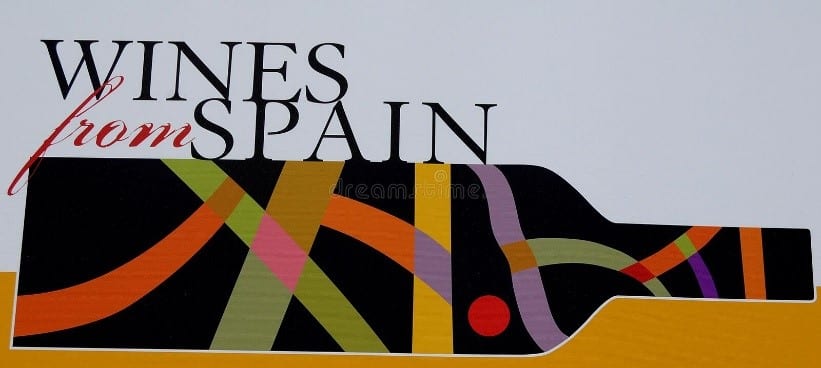
Spain faces less wine consumption
Because Spanish wines have improved, those of us who reside on other parts of the world are really consuming more of them.
Holding Tightly onto Tradition
The country has avoided classifying exceptional vineyards according to terroir. The regulatory board of the Spanish Denominations of Origin (DOs) are skeptical of any attempt to overturn a status quo that benefits large private firms and perpetuates their power.
Some segments of the Spanish wine industry prefer to Invest in marketing rather than quality control or promotion. As a result, well-known DOs such as Rias Baixas in Galicia, shaved the budget line devoted to quality control, decreasing it from 25 percent in 2014 to 20 percent in 2017 while investments in marketing increased from 35 percent to 70 percent in the same years. This is also obvious in the continuing emphasis by most DOs – encouraging high grape yields and low-quality wines.
A significant percentage of Spanish wine exports are directed to low-price countries including France, Germany, Portugal and Italy where lower prices are related to the sale of wine in bulk. Although the cheapest average price paid by this group has remained relatively stable in recent years, the reality is that they are losing their share of total exports in terms of value. Countries paying a higher average price (including the US, Switzerland and Canada) have not only increased their prices but also their market share.
What is NEW
In response to the decline in local consumption, Spanish wineries are adopting innovative marketing policies based on new market research data. Historically, the traditional wine consumer preferred wines that were plain, inexpensive, fermented and consumed on a daily basis. Contemporary Spanish and Southern European consumers drink less wine than their parents and much less than their grandparents. Research suggests that the current profile of the average wine buyer in the Mediterranean European region is under 50 years of age, university educated, and in a high-income bracket. For this group, buying wine is a planned process and consumption is a “gastronomic ritual” that is practiced “occasionally.”
Another reason people living in Spain are drinking less can be attributed to beverages that are replacing wine in Southern Europe, including beer, soft and sparking drinks, FABs (flavored alcoholic beverages), fruit juice and other liquid refreshments. When wine is the drink of choice, it is considered “fine wine” and priced accordingly.

Marketing studies carried out by the Spanish Wine Association established that less than 8 percent of respondents under the age of 24 drink wine. Spanish youngsters see this drink as old and unattractive. They also think you have to be an expert in order to enjoy wine therefore limiting wine consumption to “experts.”
Other causes for change include increased temperatures in the south of Spain favoring the consumption of cold beverages such as beer and soft drinks and the fact that these refreshments are supported by vigorous advertising campaigns. The wine sector does not actively market its products and there are legal restrictions for alcohol consumption based on age.
Wine Culture Disappearing
Wine was a part of a Mediterranean lifestyle and this diet is being replaced by fast-food. Researcher E.V. Astakhova finds that this change in wine consumption by Spanish youth is very serious and “the loss of tradition, including the wine culture, is dangerous for the society. It will have negative consequences for the country, will cause damage to its attractiveness for investors and tourists and hurt the very image of their motherland the Spanish hold dear.” According to Astakhova, the wine culture must remain intact as it is “part of the national heritage, material and spiritual culture of Spain.”
Traditionally, the Spanish wine sector has been highly fragmented. Small wine cooperatives and big companies are part of the same market although quite different in terms of production size, wines produced and cash flow. Some Spanish wineries are small and cooperatives lack adequate marketing savvy, sales networks and registered brands; in addition, they are dependent on a distribution network that is strongly concentrated and the industry tends to be vertically integrated. This is particularly onerous for some wineries causing an excess of supply and decrease in demand.
In the US and Australia, large wineries produce massive quantities of wine using different types of grapes with homogeneity in variety allowing important economies of scale and creating a high-quality product at a value price which reflects investments in technology, and marketing. New wineries are more market-oriented than Spanish wineries which are too focused on their own product and production. In addition, wine companies in Europe are concentrated and oriented toward international markets with a new focus on designations of origin. Many small wineries have developed national promotions and marketing strategies which would have been difficult to carry out individually.
Consumer Look Beyond Wine
There are many explanations for the transformation of the wine culture in Spain that go beyond price, changes in personal income, cultural and social factors. The rise in income and the higher standard of living due to industrialization and urbanization is linked to a population more concerned with health and fitness and therefore a lower consumption of alcoholic drinks.
Winemakers have a choice. They can make wines that make them happy, or produce wines that make consumers happy. The marketing strategies of wineries aimed at different consumer segments are more likely to successfully increase wine consumption in the Spanish market. Changes in the demographics of the population have changed beverage preferences to options that are better adapted to the demands of young, urban people.
A recent study of the Spanish wine buyer found that one segment of the local consumer market seeks wines that “match their food;” however, this characteristic is linked to age. The older the respondent, the greater the preference for a food connection. Older people buy premium red wines for special gatherings with friends and family where food is present and are more likely to use specialty shops to buy their wine. New eating habits, with an emphasis on a healthy life style and physical appearance plus anti-alcohol advertising campaigns promoted by public administrations have prompted the decrease in wine consumption.
Consumption declines are also seen as a progressive abandonment of the Mediterranean diet. Though its virtues have been proclaimed by food experts and health institutes in recent years, it has been losing ground for three decades against a surge of fast and ready to eat foods. The diet change has increased meats, fish, eggs, oils and dairy products and a decrease in cereals, fruits, vegetable, and wine.
The climate of Spain accounts for the tremendous upsurge of soft drinks to the detriment of wine and has been sustained by huge investments in advertising and marketing of substitute and complementary products that are controlled by massive multinational companies.
Research had determined that another important attribute of the Spanish Denominations of Origin (DO) is recognition that it is important to women and consumers without university degrees. Wine marketing that discounts this information is closing the doors to an important wine consumer segment. The producers who communicate their policy about different aspects related to DO as well as the technology and present the information in an easy-to-understand format will find support in the female market segment.
In a market with so many brands tasting is becoming more and more important as a consumer reference. Included in the “wines tasted” category include:
1. Tasted wine previously (more important than personal knowledge)
2. The image of the wine (country of origin, winning a medal or prize)
3. Region of origin
Preferences

Kelsey Knight, Unsplash
There is a clear path towards the preference for quality wine. In 1987, 78.11 percent of wines consumed in Spain were normal or table wines; 13.5 percent were appellation of origin, while by 2009, table wine had dropped to 49.20 percent and quality wines accumulated 38.02 percent of the share. The fall in wine consumption in Spain has been due mainly to the drop in demand for table wines while quality wine consumption has remained at 6.3 liters per capital over the same period. Another consideration is the evolution of the places in which the product is consumed. In 1987, 57.8 percent of wine consumption in Spain was in the home vs 42.2 percent outside the home or HORECA (Hotels, restaurants, cafes, etc.)
Winery Challenges
Spain has the largest surface areas of vineyards and in 2020, ranked third on the list of wine producing countries with output at approximately 40.7 million hectoliters. Spain has a total of 2.4 million acres of vines – the largest area of vineyards in the world, according to the International Organization of Vine; however, it is among the least productive wine sectors in Europe and significantly below other countries such as France or Italy.
It sells the cheapest wine and lacks wine zoning policies making Spain unique among traditional wine producers. The deep-seated economic model dominated by large companies with a powerful lobby that influences the government is being challenged by small a group of terroir – driven winemakers who are challenging the Spanish industrial establishment. They have built networks in rural areas throughout the country and are actively involved in local grassroots movements aiming to produce quality wines with added value, recover neglected wine regions and grape varieties and reinstate a traditional wine culture.
Favorites
At a recent wine event in Manhattan, I was introduced to two Spanish wines that have become favorites:
Winery. LaFou
LaFou. Founded in 2007 by Ramon Roqueta Segales, with the objective – to produce wines featuring the Garnacha variety and the Terra Alta wine region. Although the family of Ramon Roqueta Segales started making wine in the 12th century, this current c-suite executive became enamored with the variety and the region while studying oenology in France, Segales “discovered” the Garnacha variety and its expression of elegance. He decided to develop a project based on this variety and settled on Terra Alta which possesses a long tradition in winemaking. LaFou Cellars combines a respect for tradition with a dedication to innovation and modernization.
Wine Notes
2020. LaFou els Amelers (honors almond trees that live alongside the vines in the vineyards in the Terra Alta region). 100 percent White Garnacha. Appellation. Terra Alta. Soil composition. Predominantly limestone with clay-silt loam texture; some areas feature sandy topsoil (fossil dune).
From the youngest vineyard LaFou harvests grapes early to enhance acidity and extract the best of the primary fruit while the fruit from the oldest vineyard is harvested when berries are at an advanced stage of ripeness.
The grapes are moved to the winery and refrigerated immediately at 5 degrees C and follow a linear process: 1) Placed in stainless-steel tanks to develop a young and spirited core; 2) Moved to concrete egg vats to enhance volume, acidity and varietal expression. Ten percent of the wine is aged in oak barrels to enhance structure, elegance and longevity. Fermentation and aging for 6 months on lees in concrete egg vats and stainless-steel tanks. Ten percent of the wine is aged in 300 L oak barrels.
The wine presents a pale-yellow tone to the eye and offers a rich aromatic teaser to the nose which is followed by waves of citrus and florals (think roses, tulips), a hint of almond and the freshness of wet rocks. The palate is pleased with a generous structure and lively acidity leading to a long finish. If you like Pinot Grigio you will want to have a love affair with LaFou. Enjoy with tapas.
Winery. Mas Llunes
Mas Llunes. The construction of the Las Llunes Winery started in 2000; however, the project started in 1992 when the Roig family from Garriguella replanted old vineyards on the family’s estate and nine other plantations. They cultivated 40 hectares with Merlot, Garnacha Tinta, Cabernet Sauvignon, Syrah and small quantities of Carinena, White Garnacha, Cabernet Franc and Red Garnacha, practicing environmentally friendly vine-growing methods.
Finca Butaros comes from a 19th century vineyard with slate soil in the Butaros area, located at the northern end of the Municipality of Garriguella toward Vilamaniscle. The grapes are hand picked and each variety is harvested individually. Fermentation is completed in separate in stainless steel tanks, cooled to a temperature for 24/26 degrees C with a single daily pump over and racking every 30-40 days after the start of fermentation according to variety. Once the malolactic fermentation is completed, the two varieties are blended and aged for one year in French oak barrels and followed by 3 years in the bottle.
Wine Notes
Mas Llunes. 2015. Butaros. Varietals: 60 percent Carignan; 40 percent Red Grenache. Finca Butaros is a new flagship wine and voted the best wine in Catalonia. The grapes are from a vineyard planted at the end of the 19th century. The vines are harvested by hand when fully ripe and fermented in steel tanks.
To the eye, dark ruby red to black. The nose finds ripe red cherries, wet rocks and damp earth combined with dried fruit and dark spices, tobacco, wood and charcoal. The palate finds bold, well integrated tannins leading to a long elegant finish. Pair with beef, pasta, veal or poultry.
For additional information: Conferencia Española de Consejos Reguladores Vitivinícolas” represents the Appellation of Origin wines from Spain.
© Dr. Elinor Garely. This copyright article, including photos, may not be reproduced w
